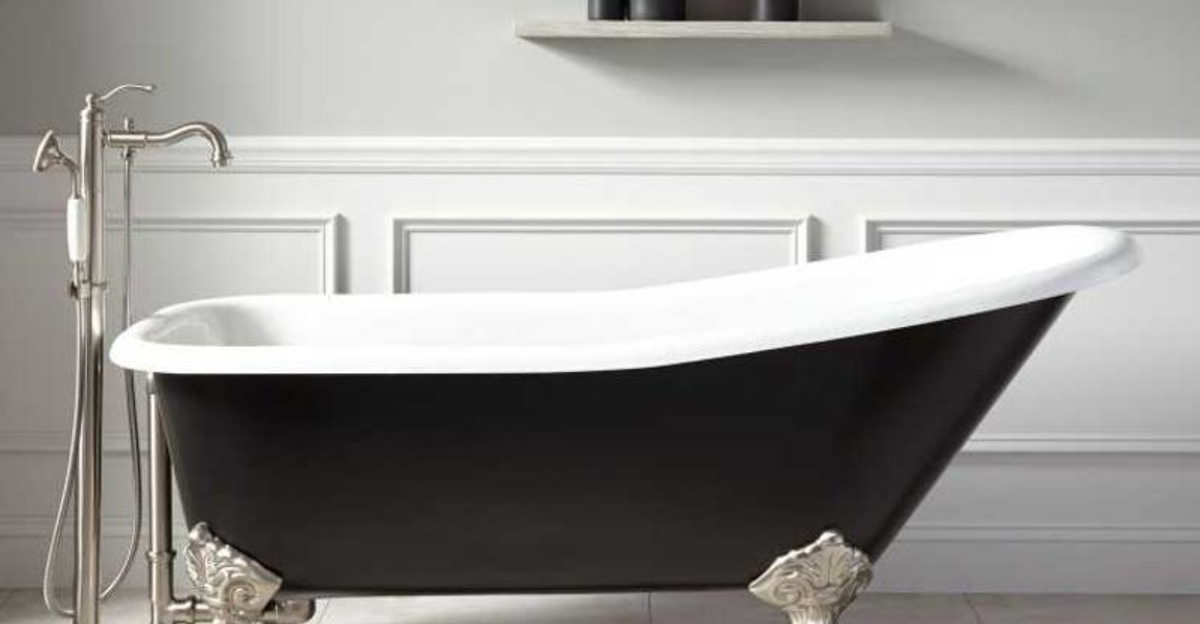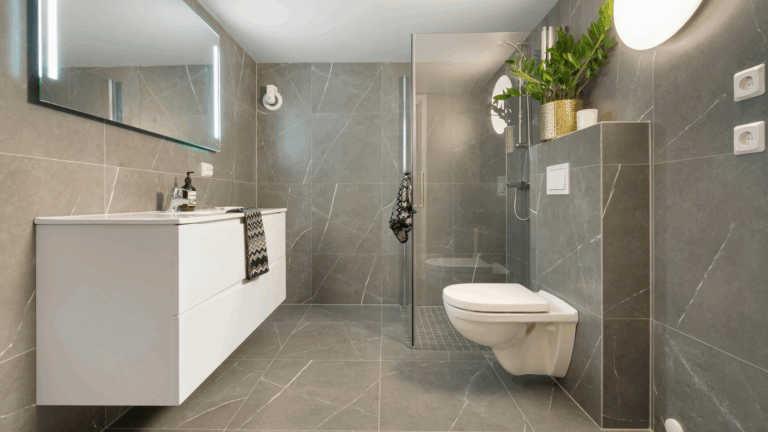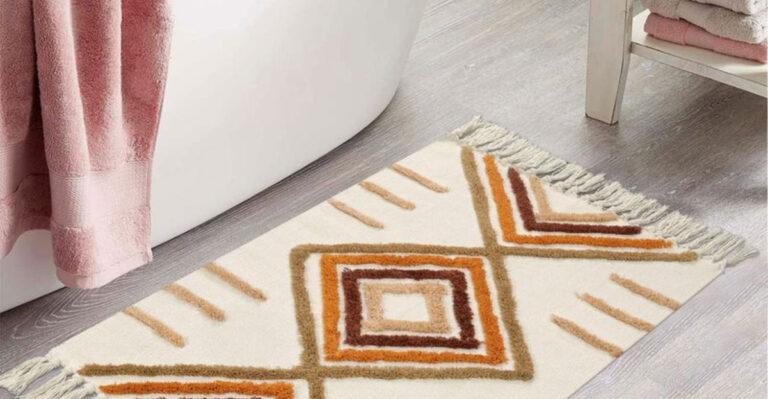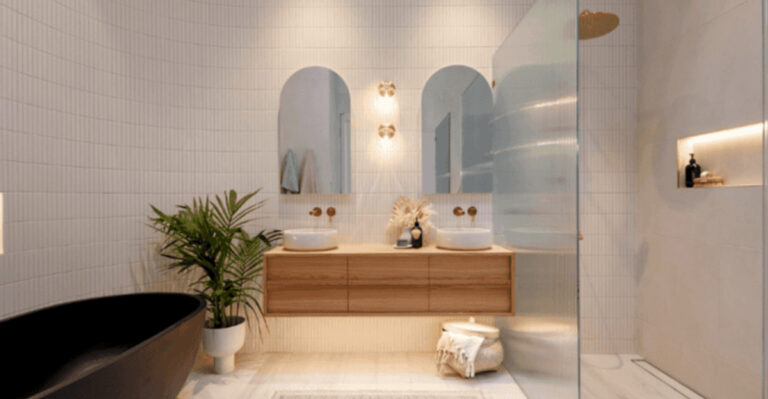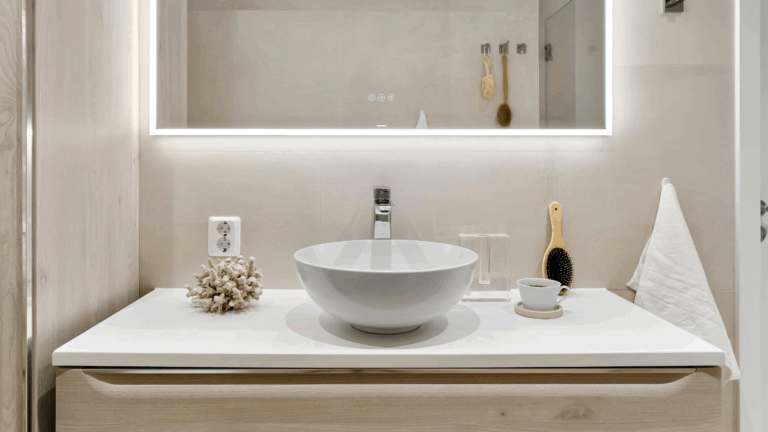18 Things To Consider When Buying A New Bathtub
Shopping for a new bathtub? Trust me, I’ve been down that rabbit hole, and it’s not as simple as just picking the prettiest one. Between soaking depth, style, size, and how much space you actually have, there’s a lot to weigh before you commit.
I wanted something that looked gorgeous but also worked with my daily routine, and didn’t feel like a regret after week two.
If you’re in the same boat, this list of 18 must-consider factors will save you from buyer’s remorse and help you find a tub that’s both dreamy and practical for your space.
1. Size And Space Constraints
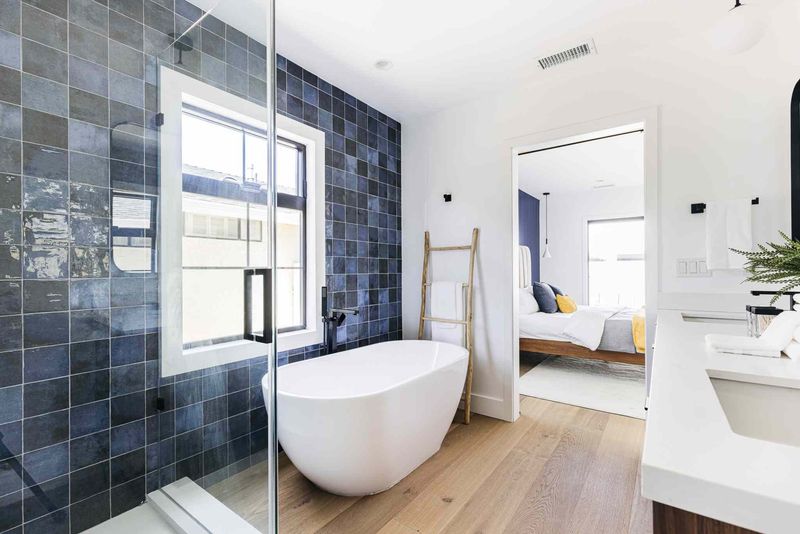
Your bathroom dimensions will dictate what size tub works best. Measure your space carefully before falling in love with a tub that won’t fit through your door!
Standard tubs run about 60 inches long, but options range from tiny 4-foot models to luxurious 8-foot soakers. Remember to account for installation clearance and any building codes that might apply.
If you have a small bathroom, consider space-saving designs like corner tubs or shorter models that still offer decent soaking depth.
2. Material Matters
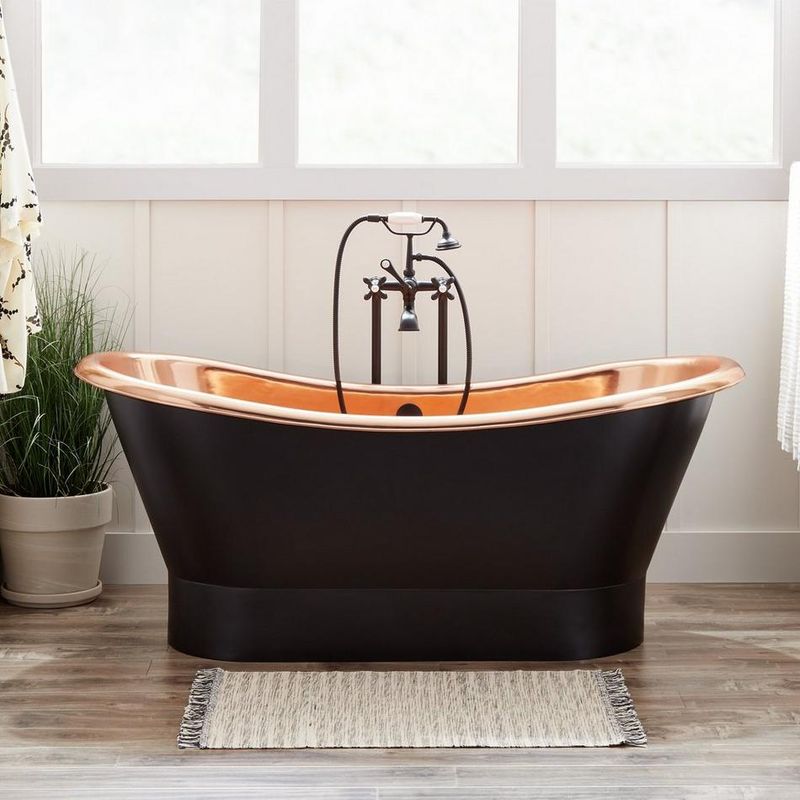
Bathtub materials affect everything from price to durability and maintenance needs. Acrylic tubs are popular for their lightweight, warm-to-touch surface and reasonable price point.
Cast iron tubs last practically forever and retain heat beautifully, but they’re super heavy and might require floor reinforcement. Fiberglass offers budget-friendly options but scratches easily.
Newer materials like stone resin combine durability with sleek looks, while copper or stainless steel tubs make bold style statements with antimicrobial benefits.
3. Weight Considerations

Many homeowners forget that bathtubs get HEAVY when filled with water and a person! A standard tub holds about 40 gallons, weighing over 330 pounds before anyone steps in.
Cast iron tubs can weigh 300-500 pounds empty, while acrylic might be just 75 pounds. For upstairs bathrooms, this weight factor becomes especially important.
Sometimes floor joists need reinforcement to support heavier tubs. Consult with a contractor if you’re eyeing a weighty model for an upper-floor bathroom.
4. Installation Type
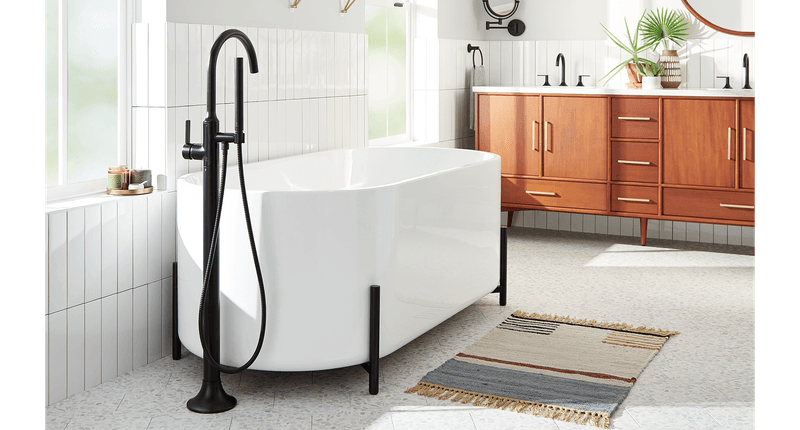
Freestanding tubs create that magazine-worthy bathroom look but require more space all around. They’re often the centerpiece of larger bathrooms.
Alcove tubs fit between three walls and are super practical for smaller spaces. Drop-in models sit inside a prepared deck or platform, while undermount tubs install beneath a deck edge for a seamless look.
Corner tubs maximize awkward spaces, and walk-in tubs offer accessibility features. Your installation type affects not just aesthetics but also plumbing requirements and costs.
5. Depth And Comfort

Shallow tubs might save water but won’t deliver that luxurious soaking experience. Standard tubs have about 14 inches of water depth, while deep soaking tubs offer 18+ inches.
Japanese-style soaking tubs feature exceptional depth but in a smaller footprint. Look for ergonomic features like lumbar support, built-in headrests, or contoured bottoms that make lounging more comfortable.
Consider who’ll use the tub most often – taller family members need longer tubs, while older users might prefer models with lower sides for easier entry.
6. Water Efficiency
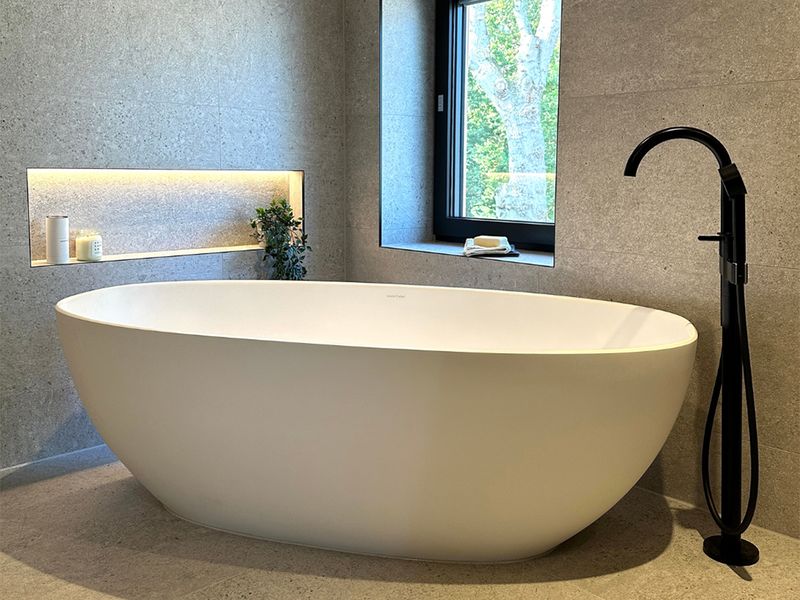
Modern water-saving tubs use clever designs to maximize soaking depth while minimizing water usage. Some models feature unique shapes that require less water to fill while still providing full-body immersion.
Check the gallon capacity before buying – standard tubs hold 40-60 gallons, but eco-friendly options might use 25-30 gallons.
Your water heater capacity matters too! If you love long soaks, look for tubs with good insulation that keeps water warmer longer, reducing the need to add hot water during your bath.
7. Special Features
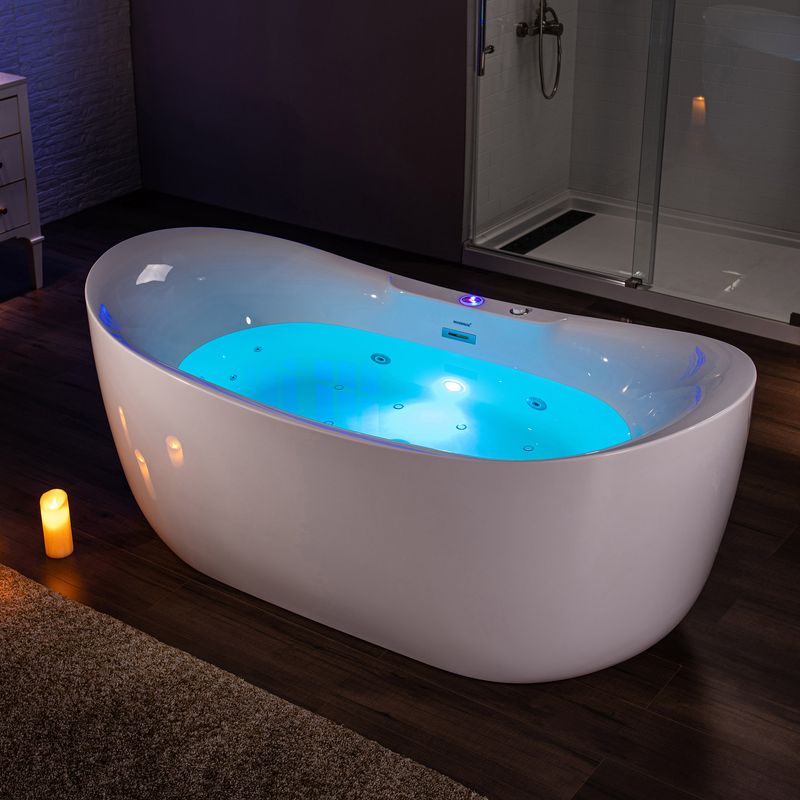
Gone are the days of plain soaking tubs! Today’s options include air jets that create millions of tiny bubbles for gentle massage or whirlpool jets for stronger hydrotherapy.
Chromotherapy uses colored lights to enhance mood, while aromatherapy systems diffuse essential oils. Some luxury models offer built-in sound systems to play your favorite tunes while you soak.
Heated backrests keep you cozy, and overflow channels prevent bathroom floods. Just remember – more features mean higher prices and potentially more maintenance down the road.
8. Accessibility Needs
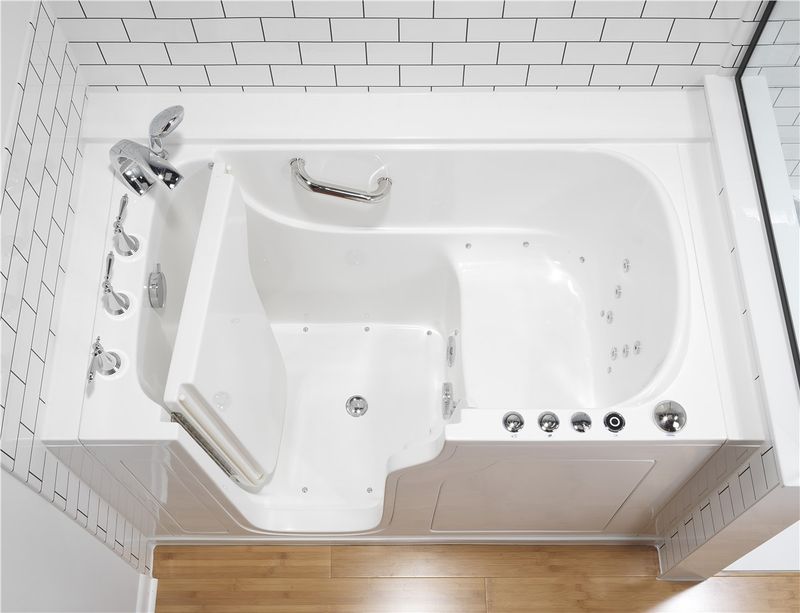
Thinking about aging in place or accommodating family members with mobility challenges? Walk-in tubs feature watertight doors and built-in seats for safer bathing.
Look for ADA-compliant models with grab bars, non-slip surfaces, and lower threshold heights. Transfer benches help users move safely from wheelchairs into standard tubs.
Some accessible tubs include quick-drain technology that empties water in under two minutes, reducing the wait time for users who can’t exit until the tub is empty.
9. Plumbing Requirements

Switching from a standard alcove tub to a freestanding model often means reworking your plumbing. Freestanding tubs typically need special freestanding or wall-mounted faucets.
Drain placement matters too – center, offset, or reversible drains accommodate different bathroom layouts. Consider whether your existing pipes can support your dream tub or if you’ll need expensive plumbing modifications.
Specialty tubs like whirlpools require dedicated electrical circuits, and air jet systems need proper ventilation to prevent moisture problems.
10. Style And Aesthetics
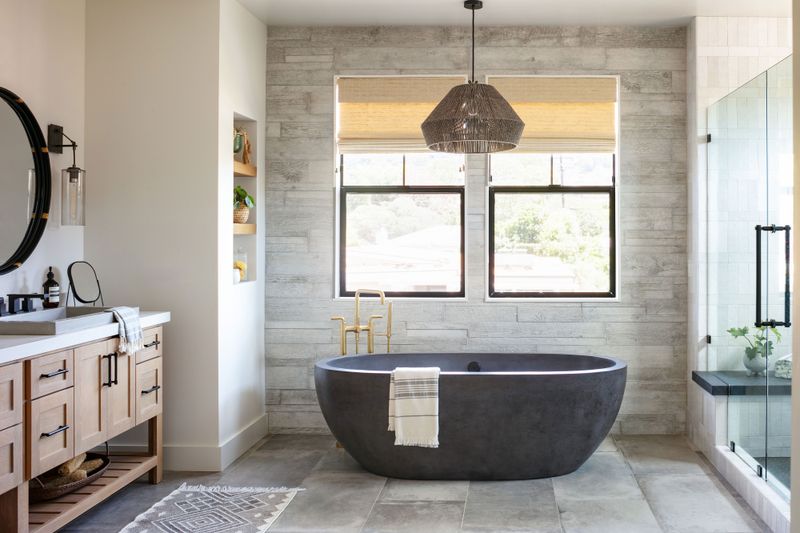
Your bathtub makes a major style statement! Classic clawfoot tubs bring vintage charm, while sleek rectangular models fit contemporary spaces. Oval and round tubs create softer looks.
Color options extend far beyond basic white – from subtle beiges to bold blacks or even custom colors. Some manufacturers offer textured finishes or decorative exteriors for freestanding tubs.
Match your tub style to your overall bathroom design for a cohesive look. Even functional elements like faucets and overflow covers come in various finishes to complement your décor.
11. Maintenance Requirements
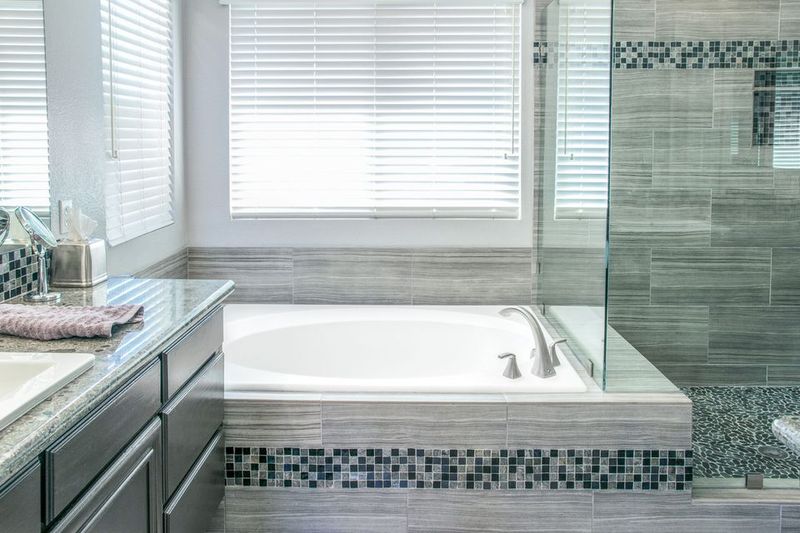
Nobody wants to spend hours cleaning their tub! Acrylic and fiberglass surfaces wipe clean easily but can scratch. Porcelain and enamel resist scratches but require non-abrasive cleaners.
Jetted tubs need regular cleaning cycles to prevent bacteria buildup in the plumbing lines. Models with self-cleaning systems save significant maintenance time.
Consider the accessibility of all surfaces for cleaning – freestanding tubs need cleaning all around, while alcove models have fewer exposed sides. Seamless designs with fewer crevices make cleaning much easier.
12. Durability And Longevity

Quality bathtubs should last 10-15 years minimum, with premium materials lasting decades longer. Cast iron tubs from the early 1900s still function perfectly in many homes!
Check warranty terms carefully – some cover only the shell while others include plumbing components. The best warranties offer non-prorated coverage that doesn’t diminish over time.
Look for reinforced construction in acrylic and fiberglass tubs to prevent flexing and cracking. Solid surface materials offer excellent durability with renewable surfaces that can be buffed if damaged.
13. Budget Considerations
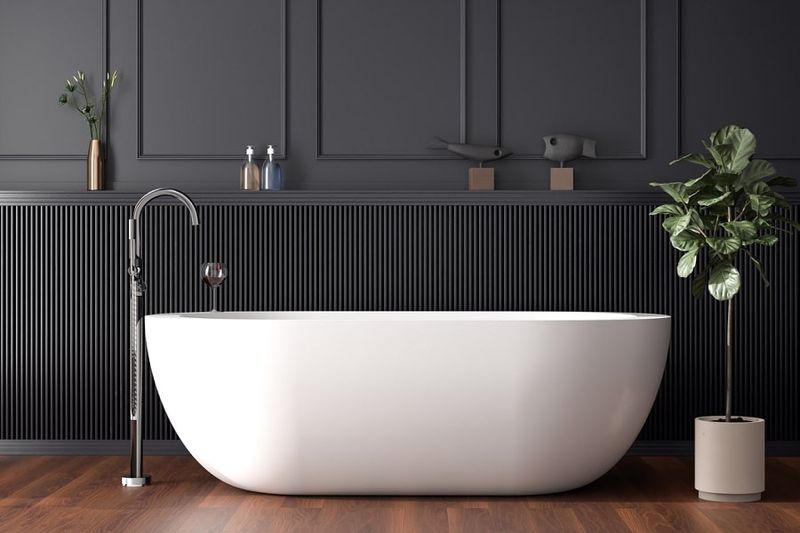
Bathtub prices range dramatically from $200 basic models to $20,000+ luxury versions. Most homeowners find good options between $500-$3,000.
Factor in installation costs, which often exceed the tub price! Moving plumbing connections, reinforcing floors, or widening doorways adds significant expense. Sometimes spending more upfront saves money long-term.
Energy-efficient tubs reduce water bills, while quality materials need less frequent replacement. Shop end-of-season sales or floor models for potential savings on higher-end tubs.
14. Heat Retention Properties

Nobody enjoys bathwater that cools too quickly! Materials like cast iron and stone resin excel at retaining heat, while fiberglass cools faster.
Look for insulated tubs with foam layers between the shell and structure. This hidden feature makes a huge difference in bath enjoyment but isn’t visible when shopping.
Some luxury models include inline heaters that maintain your preferred water temperature throughout your soak. While adding to the initial cost, they eliminate the need to add hot water during longer baths.
15. Noise Factors
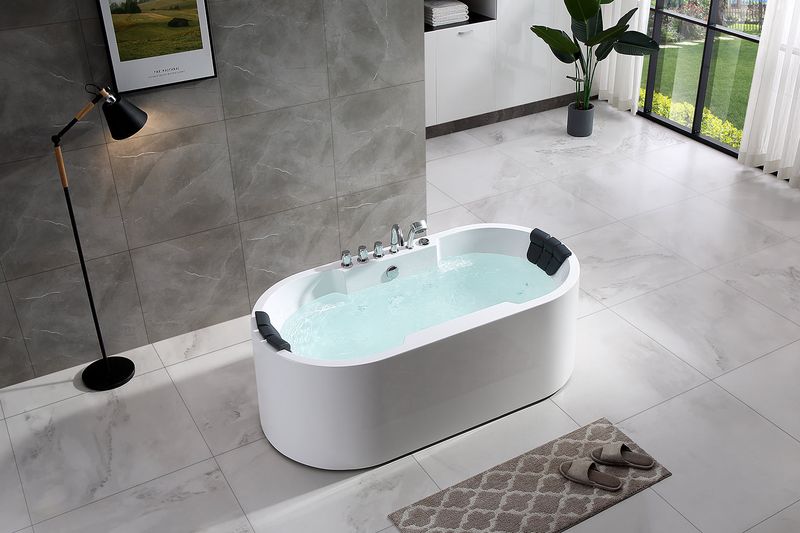
Filling an acrylic or fiberglass tub creates more noise than filling cast iron or stone models. This matters if your bathroom shares walls with bedrooms or living spaces.
Jetted tubs produce motor noise during operation. Quality models feature insulated motor compartments and anti-vibration mounting to minimize sound. Air jet systems typically run quieter than whirlpool jets.
If noise concerns you, ask to hear a floor model in operation before purchasing or check online reviews specifically mentioning noise levels.
16. Faucet Compatibility
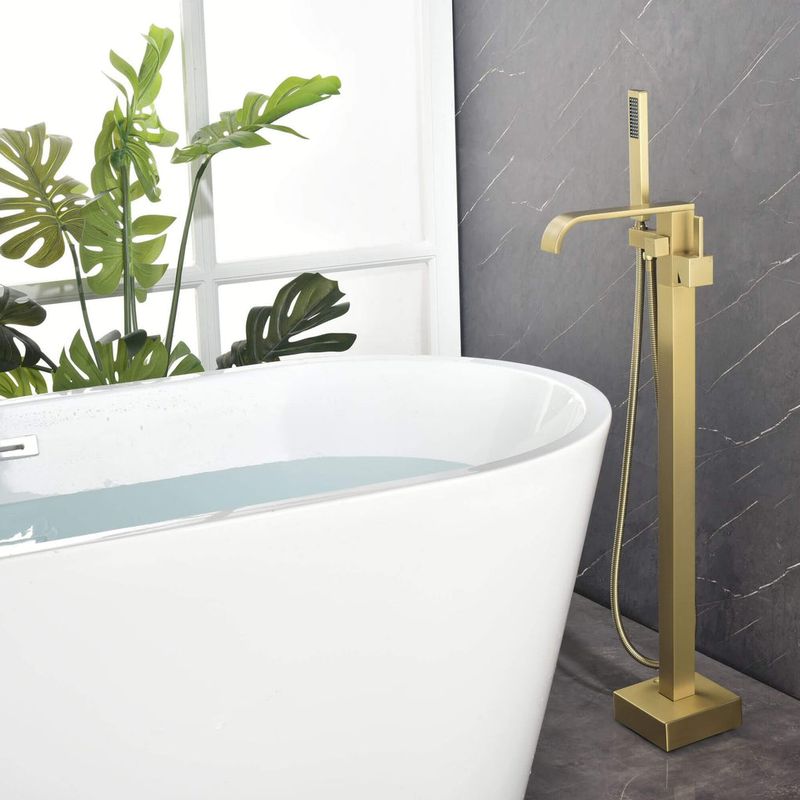
Your dream tub might require specific faucet types! Freestanding tubs need either wall-mounted or freestanding faucets, which cost significantly more than standard deck-mounted options.
Check how many faucet holes your tub provides – options include single-hole, 3-hole, and 4-hole configurations for different faucet styles. Some tubs come with pre-drilled holes while others require drilling during installation. Valve systems affect water flow and temperature control.
Thermostatic valves maintain precise temperatures, while pressure-balance valves prevent scalding if someone flushes a toilet while you’re bathing.
17. Resale Value Impact
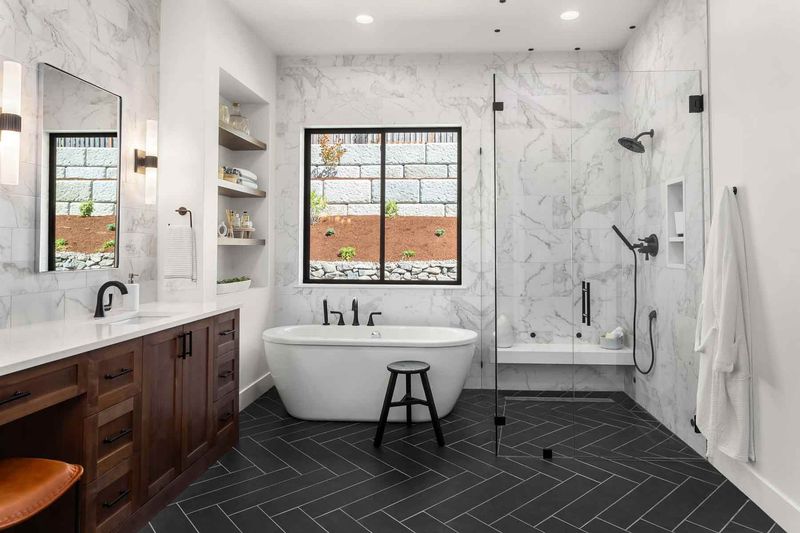
Updating your bathroom with a quality tub typically returns 60-70% of your investment when selling your home. Luxury bathrooms rank high on buyer wish lists!
Neutral colors and standard sizes appeal to the widest range of potential buyers. While you might love a bright red soaking tub, it could limit your home’s marketability.
Walk-in tubs can actually decrease home value unless you’re in a retirement community, as they appeal to a narrower buyer pool. Consider a tub-to-shower conversion instead if accessibility is your main concern.
18. Installation Timeline
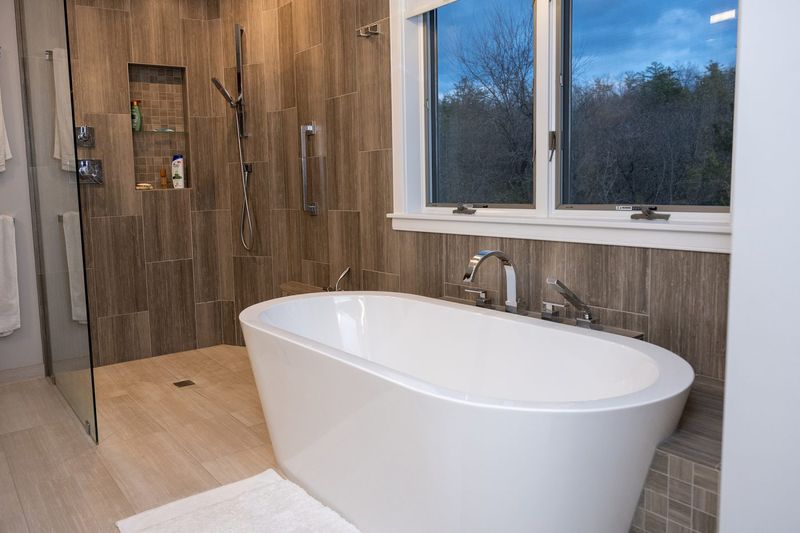
Simple tub replacements might take just 1-2 days if you’re swapping similar models. However, major changes like converting from an alcove to freestanding tub can stretch to 1-2 weeks.
Factor in potential delays for custom orders, which might take 4-12 weeks to arrive. Some specialty tubs ship from overseas with even longer lead times. Ask about temporary bathroom alternatives during installation.
Living without your only bathroom for days isn’t fun! Professional installers should provide realistic timelines and clear communication throughout the process.

